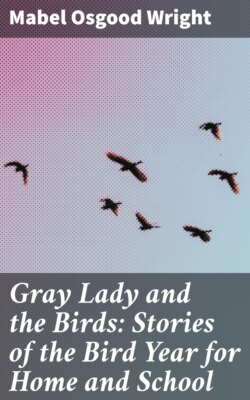Читать книгу Gray Lady and the Birds: Stories of the Bird Year for Home and School - Mabel Osgood Wright - Страница 11
На сайте Литреса книга снята с продажи.
The Moulting
ОглавлениеTable of Contents
“After the nesting season is over, and a pair of birds have raised one, two, and, as with the Wrens, sometimes three broods, the feathers of the parents become worn and broken, and not fit for winter covering, nor are the wing quills strong enough for the fall flight.
“At this time, when the young birds are able to care for themselves, the pairs no longer keep alone together, but, leaving their nesting-haunts, travel about either in a family party or in larger friendly flocks, and, although some birds, like the Song Sparrow and Meadowlark, sing throughout the season, the general morning chorus and the nesting season end together, in early or middle July.
“It is quite difficult to name the birds when young and old travel in flocks, for when a male is bright-coloured and the female dull, the first coat of the young is often such a mixture of both that it is easily mistaken for a wholly different and strange bird.
“In August or September almost all of our birds change their spring feathers. This is called moulting. And the brightly coloured birds often drop their wedding finery for dull-coloured travelling cloaks, so that they may not be seen when they fly southward through the falling leaves.
“After this season Father Tanager, of the scarlet wedding coat with black sleeves, appears in yellowish-green, like his wife, and the little Tanagers sometimes have mixed green, yellow, and red garments, for all the world like patchwork bedquilts pieced without regard to pattern.
